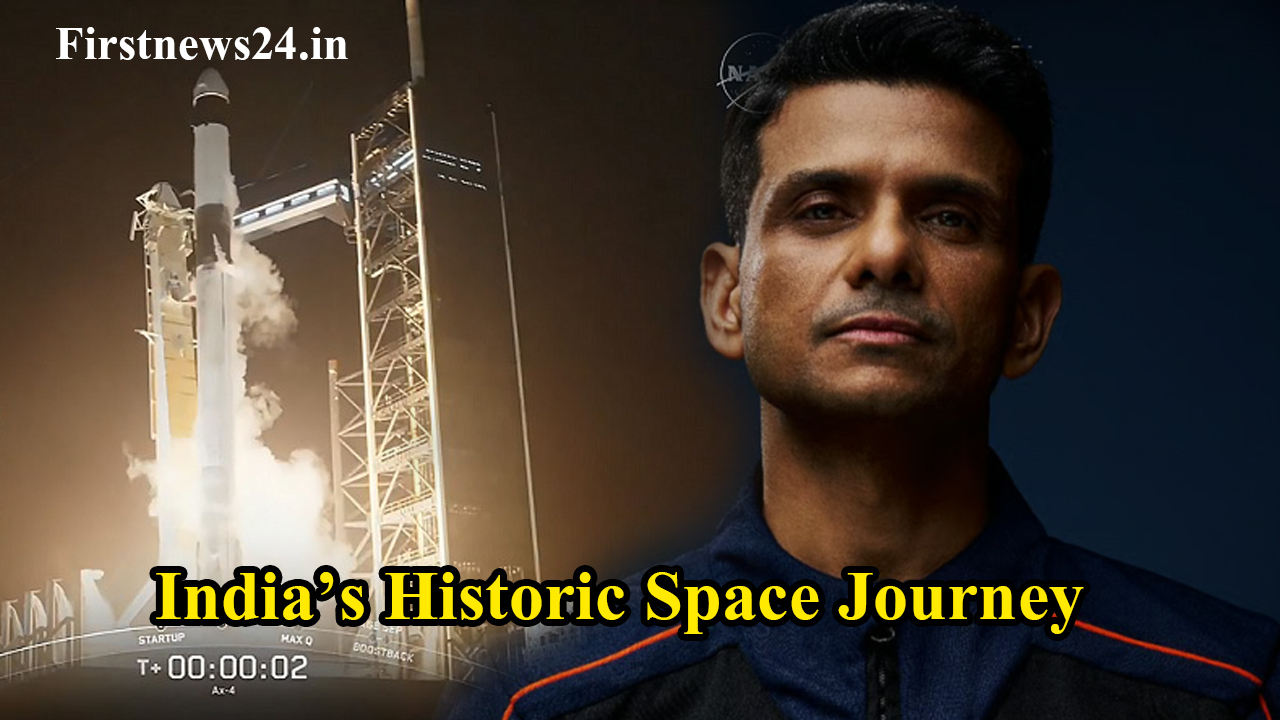In the early hours at Cape Canaveral, a significant milestone for India’s space ambitions unfolded. At 2:31 AM Eastern Time (12:01 PM IST), SpaceX’s Falcon 9 rocket roared to life, launching the Axiom-4 mission from Kennedy Space Center, Florida. At the helm of the Dragon capsule named Grace was Group Captain Shubhanshu Shukla, marking India’s first crewed spaceflight to the International Space Station (ISS) in over four decades.
A Momentous Lift-Off
Moments after reaching orbit, Shukla greeted his country with warmth and excitement over radio, saying, “Namaskar, mere pyaare desh vasiyon. What a ride! We are now orbiting Earth at an incredible speed of 7.5 kilometers per second.” Indian Prime Minister Narendra Modi also lauded the mission, highlighting Shukla’s historic achievement as he embarks on becoming the first Indian aboard the ISS.
Shukla’s journey echoes a legacy that began in 1984 when Wing Commander Rakesh Sharma became the first Indian to cross the Karman line—the internationally recognized boundary of space—aboard the Soviet Soyuz T-11. More than 41 years later, Shukla’s voyage signals a new era for India’s human spaceflight aspirations.
India’s Space Ambitions Take Flight
“This mission is not just the beginning of my journey to the ISS but the start of India’s human spaceflight program,” Shukla said, underscoring the nation’s long-term goals. India envisions establishing its own space station by 2035 and undertaking crewed lunar missions and beyond.
After several delays, the Axiom-4 crew finally lifted off on Wednesday. Alongside commander Peggy Whitson (65), the veteran astronaut and mission lead from the US, Shukla (39) joined mission specialists Sławosz Uznanski (41) from Poland and Tibor Kapu (34) from Hungary on a planned 14-day expedition aboard the ISS.
The Launch Experience and Journey to the ISS
Before departure, the crew shared an emotional farewell, waving to loved ones as they rode to the launch pad in a Tesla. Once inside the Dragon capsule, the crew underwent last-minute system checks as the countdown commenced.
Approximately nine minutes and 38 seconds after liftoff, the capsule separated from the Falcon 9’s second stage, beginning its precise orbital chase. Grace now orbits Earth at about 27,000 km/h, circling the planet every 90 minutes.
Docking with the ISS is a delicate process. Over the next 24 to 28 hours, the capsule will perform a series of meticulously timed thruster burns to gradually raise its orbit and synchronize perfectly with the station’s path. Even minor timing errors could disrupt this narrow rendezvous window.
The Final Approach: Precision Docking
On Thursday afternoon at around 4:30 PM IST, Grace is expected to dock with the Harmony module of the ISS. The final approach is slow and methodical. Dragon will pause multiple times — first at 400 meters, then closer in stages — allowing ground control and onboard systems to verify safety before proceeding.
Within 20 meters of the station, sophisticated laser sensors and cameras take over, guiding the capsule to move forward at mere centimeters per second. A “soft capture” uses magnetic guides to gently draw Grace into the docking port, followed by a “hard capture” where mechanical latches secure the connection.
Only after rigorous pressure and leak checks by ground engineers will the hatch open, permitting the astronauts to transfer aboard the ISS.
A Touch of Home in Space: Joy the Swan
Among the crew is a unique passenger — Joy, a soft white swan toy serving as a zero-gravity indicator. This symbolic mascot was chosen by Shukla’s six-year-old son, Kiash (nicknamed Sid), who adores animals. Mission specialist Tibor Kapu shared that their initial ideas included dinosaurs and lions, but Joy ultimately became a meaningful companion for the crew.
“Joy represents a little piece of home and reminds us of the loved ones waiting back on Earth,” Kapu said.
